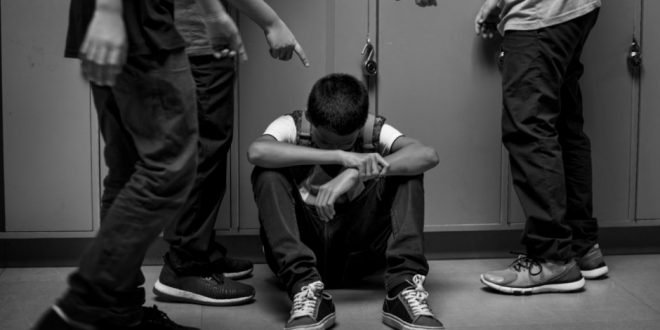Talking to children and youth about homophobia, biphobia and transphobia
Discussing issues like homophobia, transphobia and biphobia with children and youth can provide them with important tools for understanding and resisting the strong influence these phobias have within school culture and society at large. It’s common for children to encounter and learn homophobia, transphobia and biphobia very early in their elementary education, which means it’s important for parents to address these topics (in age-appropriate ways) from an early age through adolescence. Here are some tips for getting started.
1) Use language your child understands.
Concepts like homophobia, transphobia and biphobia refer to complex social phenomena which can be challenging for anyone to fully grasp. This means it’s important to consider age-appropriate ways of addressing these topics in conversation. That said, the basic elements are fairly easily explained. Depending on the age of the child, consider framing these phobias in terms they can relate to, from “meanness” through to “bullying,” from “dislike” through to “phobia”, etc.
2) Be Prepared to Listen
Chances are your child will have already encountered a number of examples of homophobic, transphobic, or biphobic behaviour. If they don’t volunteer their experiences, ask them to try and think of an example from their school, community group, or another activity they may be a part of. In either case, be prepared to spend some time listening. Try your best to weave whatever examples they share throughout your discussions, as this may help to ground some of these concepts in lived experience.
3) Use helpful media
There are a number of books, films and websites in existence that present narratives around LGBTI identities as well as homophobia, and to a lesser extent, transphobia and biphobia. These can serve as excellent tools for conversation as they provide concrete, shared points of reference for exploration through discussion.
4) Try not to make things overly simple
While speaking age-appropriately is obviously important, it’s also important to frame your discussion realistically. While it can be easy to paint the world in black and white, where people who are homophobic, transphobic or biphobic are ‘bad’ and others the ‘good’ or innocent victims, the reality of schoolyard bullying is far more complicated than this. Keeping this in mind, consider describing homophobia as something that people “do” as opposed to a state of being or personal characteristic. There’s potential here to understand these phobias as hurtful behaviour with many victims, including even the aggressor. At the end of the day, almost all of us will at some time be implicated in a homophobic, transphobic or biphobic statement or activity, meaning that we all have a responsibility to learn to address these issues each and every day.
5) Keep it personal
It can be really useful to personalize this conversation by including a LGBTI-identified loved one. If no one in the immediate family identities openly as a member of the LGBTI spectrum, consider bringing in an extended family member or friend to help bring the conversation to a personal level. This way, children and youth are much more likely to understand the humanity of these ideas, and some of the real-life consequences of homophobia, transphobia and biphobia.
6) Establish a strong network of support
While it’s great to provide children and youth with the tools to challenge homophobia, transphobia and biphobia, it’s important not to expect them to stand alone. Firstly, make sure they know that this is not just a one-time talk you’re having with them, and that they can come to you, or another designated family member, to discuss these issues further in the future. Furthermore, it’s worth following up at school to determine where the staff stand on issues of LGBTI bullying. Look over some of the other guides in this section to get an idea of how to approach teachers and administration around these issues. Finally, speaking with other parents in the school community, as well as their children, raises the chances that you won’t be the only family on the block challenging these phobias, and working to foster a more inclusive and safe education for all.
 Lesbian, Gay, Bisexual, Transgender & Intersex News Lesbian News, Gay News, Bisexual News, Transgender News, Intersex News, LGBTI News
Lesbian, Gay, Bisexual, Transgender & Intersex News Lesbian News, Gay News, Bisexual News, Transgender News, Intersex News, LGBTI News




